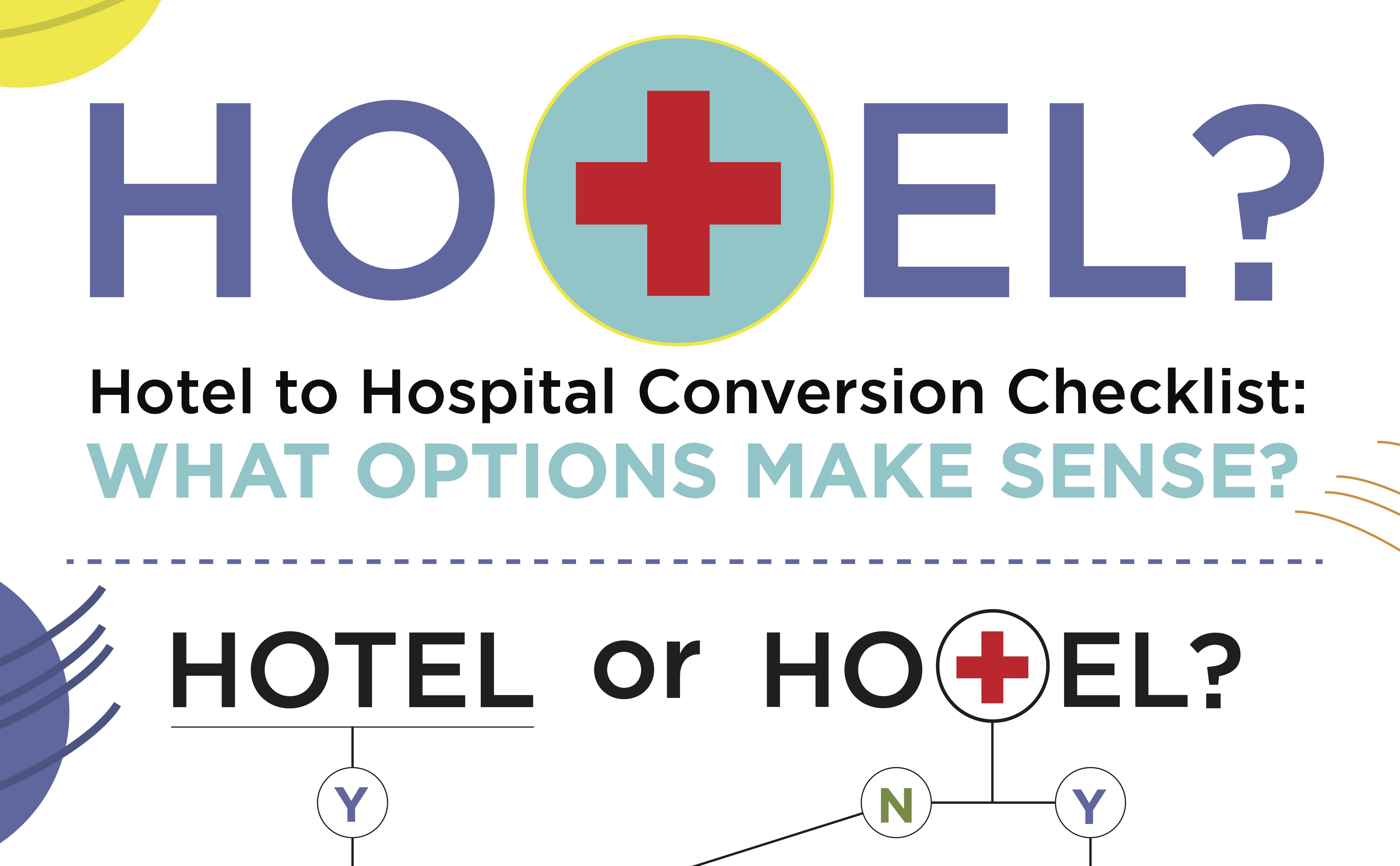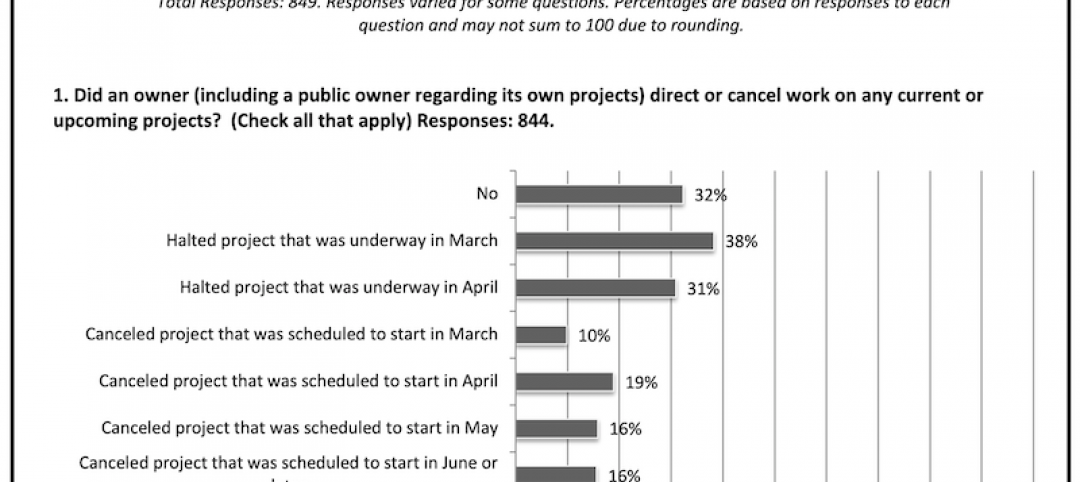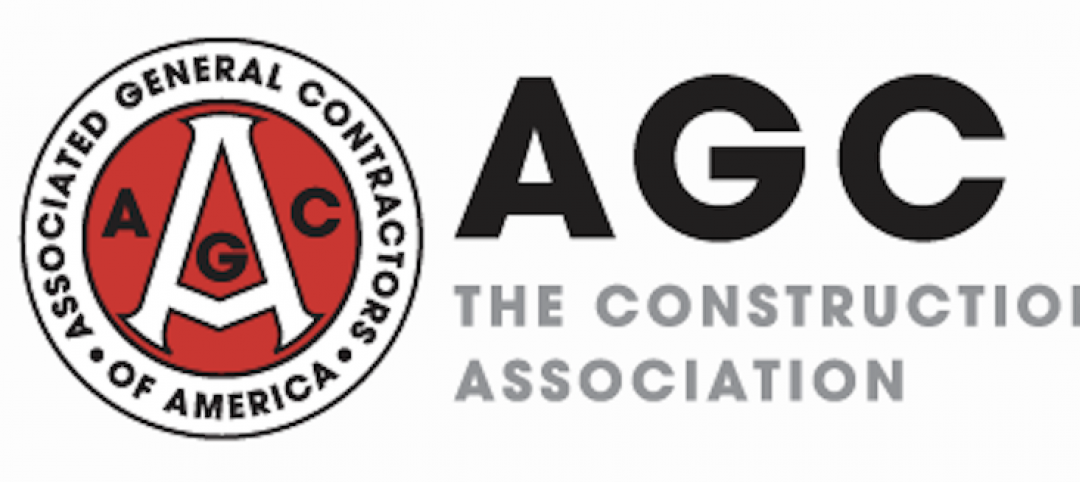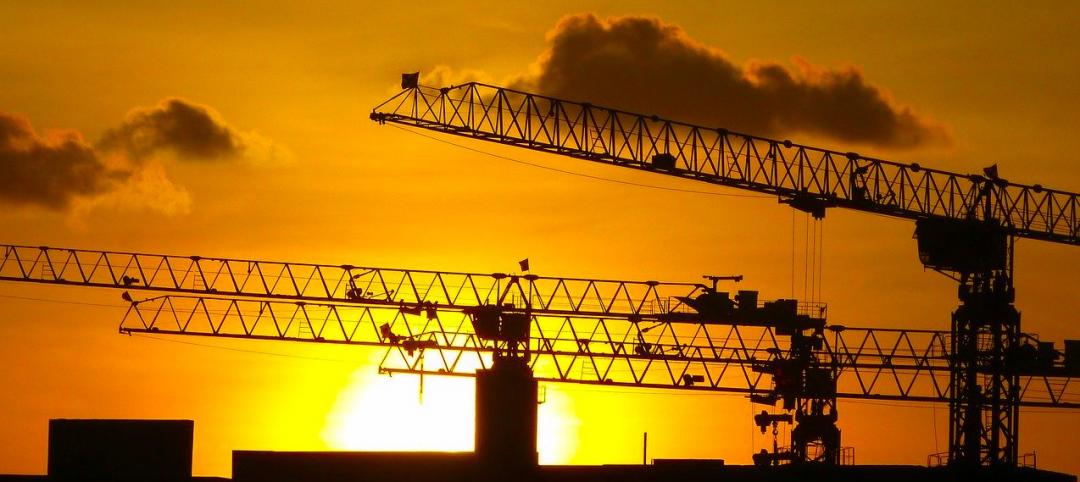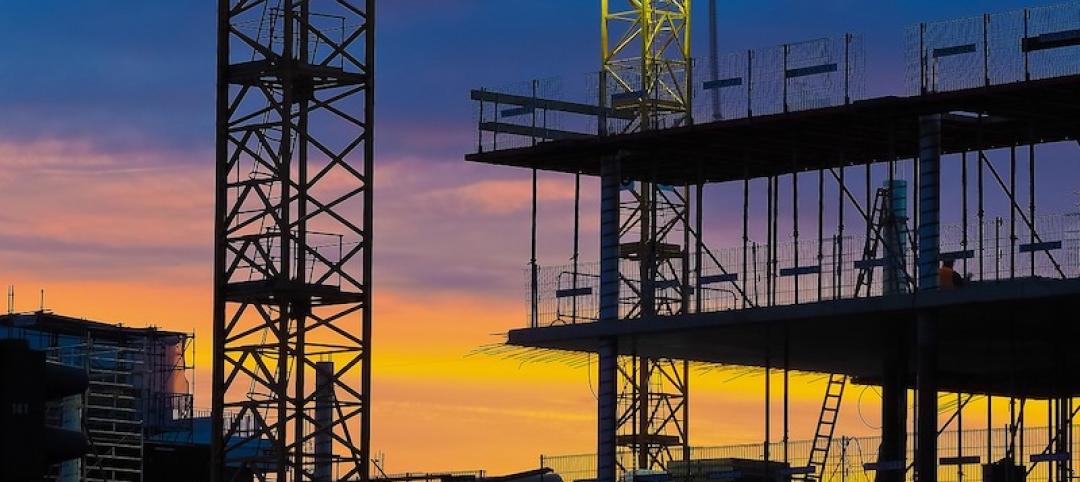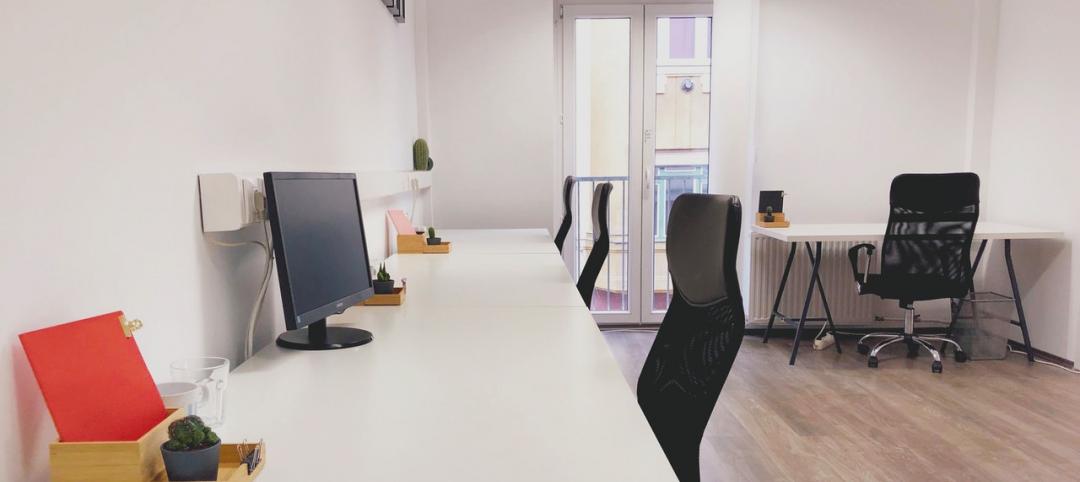The American Hospital Association estimates that the U.S. has 924,000 hospital beds, or fewer than three beds for every 1,000 people. Less than 5% of those beds can be used for intensive-care patients.
If, as Array Advisors predicts, most states will run out of available ICU beds by the middle of this month, repurposing hotels as temporary healthcare facilities becomes more viable, even necessary, by the day.
Tvsdesign, whose team is currently the design architect on the 1.2-million-sf Javits Center expansion in New York, has put together a checklist for when hotel-to-hospital conversion options make sense (see infographic below).
The firm also has analyzed three scenarios, based on patient needs and how they can be matched with available hotels.
• Scenario 1: Non-COVID-19 positive patients in recovery from surgeries/illnesses who don’t require life-support equipment. These patients could be relocated to appropriate facilities to free up hospital beds for meeting demands related to COVID-19.
• Scenario 2: Non-COVID-19 positive patients in recovery that require specialized and powered equipment.
• Scenario 3: COVID-19 positive patients in treatment.
The firm observes that some hotels will work better than others in supporting each scenario. Cleanable surfaces, mechanical and electrical systems, nurse-call devices, and handwash sinks are all factors that might need to be added to any hotel conversion.
Tvsdesign has identified hotel room types that can support these patient scenarios, ranging from 300 to 1,000 sf of space used per patient. For instance, a standard 300-sf King Suite room in a hotel might be a best-use case for Scenario 1; a 500-sf King Suite, with additional power, could support Scenarios 1 and 2. The latter suite setup, with a full kitchen, would allow family members to stay full time with patients, and allow for the patient to have an extended recovery period.
Option three would be a 600-sf standard King that could work for Scenario 3. A connecting room could be used as an ante room to maintain necessary pressure levels in the isolation room, and act as a nurse’s station. Before any conversion, the owner should consult with a mechanical engineer for adjustments to the room’s HVAC system.
Option 4, a 1,000-sf King Suite with the same setup as Option 3, also works for Scenario 3.
“Based on our analysis, we believe that hotels can easily be used to care for COVID-19 negative patients who may be in recovery and not requiring intensive care,” states tvsdesign. “The most practical and cost-effective approach is to divert patients from hospitals to hotel rooms as possible, increasing capacity within hospitals for the most critically ill patients.”
(CLICK INFOGRAPHIC TO ACCESS FULL-SIZE VERSION)
Related Stories
Coronavirus | Mar 25, 2020
Coronavirus pandemic's impact on U.S. construction, notably the multifamily sector - 04-30-20 update
Coronavirus pandemic's impact on U.S. construction, notably the multifamily sector - 04-30-20 update
Coronavirus | Mar 25, 2020
Plaza Construction and Central Consulting & Contracting strategic alliance expands to Florida in response to coronavirus pandemic
New York City-based partnership to aid Florida healthcare systems amid COVID-19 outbreak and will continue medical construction in the region following resolution.
| Mar 25, 2020
Designing public health laboratories to safeguard researchers during pandemics
As laboratory designers, we want to shed light on a subset of our population critical to protecting us from, and preventing the spread of, severe outbreaks: public health researchers.
Market Data | Mar 23, 2020
Coronavirus will reshape UAE construction
The impact of the virus has been felt in the UAE, where precautionary measures have been implemented to combat the spread of the virus through social distancing.
Coronavirus | Mar 21, 2020
Perkins and Will’s CEO sees a light at the end of COVID-19 tunnel
Phil Harrison says the virus outbreak could make more clients see the connection between design and wellbeing.
Coronavirus | Mar 21, 2020
Construction business and union leaders call on government officials to include construction as an 'essential service' during shutdowns
The chief executive officer of the Associated General Contractors of America, Stephen E. Sandherr, and the President of North America’s Building Trades Unions, Sean McGarvey, issued the following joint statement urging Government Officials to Exempt Construction Work from Regional, State and Local Work Shutdowns.
Coronavirus | Mar 21, 2020
Associated General Contractors launches eight-part webinar series around COVID-19
The programming, which begins Monday, will offer advice on how businesses might need to adjust during the virus.
Coronavirus | Mar 20, 2020
BD+C research: The AEC industry braces for tough sledding in the coming months amid COVID-19 outbreak
A new BD+C poll of U.S. architecture, engineering, and construction firms finds that companies are anticipating project postponements and delays.
Coronavirus | Mar 20, 2020
Pandemic has halted or delayed projects for 28% of contractors
Coronavirus-caused slowdown contrasts with January figures showing a majority of metro areas added construction jobs; Officials note New infrastructure funding and paid family leave fixes are needed.
Coronavirus | Mar 20, 2020
AIA implores Congress to provide relief to business owners and employees
The American Institute of Architects (AIA) 2020 President Jane Frederick, FAIA, and EVP/Chief Executive Officer Robert Ivy, FAIA, are urging Congress to address the critical needs of business owners and employees during the COVID-19 pandemic.


